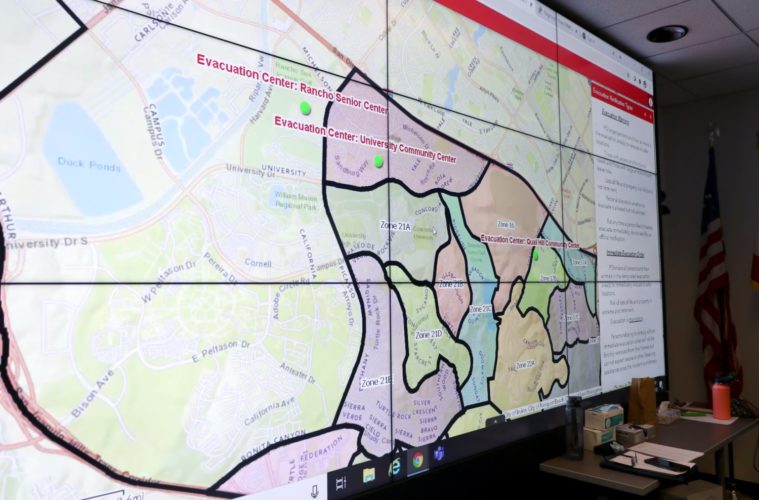As California continues to exceed annual wildfire totals, 90,000 residents between Irvine and Lake Forest will not forget being forced from their homes due to the Silverado Fire one year ago, on Monday, Oct. 26, 2020.
Still, after the evacuations were lifted, Irvine residents began sharing the chaotic scene, as dozens were met with traffic congestion, while others say they were unaware evacuations were mandatory.
Now, one year later, Robert Simmons, manager of Irvine’s Office of Emergency Services, reflects on the lessons learned and says he is aware of the impact the Silverado Fire had on residents leaving Irvine. Simmons added the city has since expanded its evacuation zones from 40 to 116.
In an interview with Irvine Weekly, Simmons said the wind also played a significant role in how the city mapped out evacuation plans that October morning.
“We never thought we would have evacuations go South of Irvine Blvd. However, during the Silverado Fire, just due to the wind and wild conditions that incident posed, we did issue evacuation warnings — but having to draw that up on the fly didn’t go as smoothly as when we pre-identify those routes.”
Simmons said he is confident updates to the city’s evacuation zones, along with an intuitive emergency siren system, will create more awareness for residents during any type of emergency.
“We have a very culturally diverse community — and there’s not enough time for officers to go door to door in these communities to issue evacuations. Since a lot of our community is not necessarily from here, they hear police sirens — they may not know that they’re necessarily in an area that they need to leave.”
Given the city’s proximity to the Silverado, Bond and Blue Ridge fires of 2020, the city has had recent experience dealing with significant wildfire events. But, Simmons said while the Silverado Fire was not the largest wildfire in Irvine he has experienced, the speed outmatched larger wildfires.
“Irvine has experienced larger wildfires acreage-wise. The Santiago fire of 2007 had a larger burn scar and a larger footprint, but it didn’t move nearly at the speed Silverado did. Silverado erupted under Santa Ana wind-like conditions, wind gusts of 70 mph, sustained winds of 50 mph — Silverado was just different because it erupted so much quicker and moved so much faster than some of the previous fires we’ve experienced.”
In total, the Silverado Fire burned more than 12,000 acres, destroying five structures, and damaging nine others. Two Orange County Fire Authority firefighters were significantly injured in the blaze. It took more than 700 firefighter personnel 12 days to reach 100% containment on the blaze, according to CalFire.
Shane Sherwood, Orange County Fire Authority Chief, said he is happy to report that the two firefighters injured are making steps toward recovery.
“We are so thankful that both Firefighters Dylan Van Iwaarden and Phi Lee continue to make positive strides in their healing process,” Sherwood wrote in a text message to Irvine Weekly. “They both are looking forward to one day returning as full-time firefighters.”
The cause of the Silverado Fire may have been sparked by a lashing wire, however, the official cause is still under investigation.
In 2021, more than 7,000 fire events burned 2.35 million acres across California. In terms of acreage, the state’s 2021 total burned acreage has exceeded the five-year average burn total — 1,090,048 — by more than 1 million acres, with approximately 650 fewer fire events.
Advertising disclosure: We may receive compensation for some of the links in our stories. Thank you for supporting Irvine Weekly and our advertisers.

